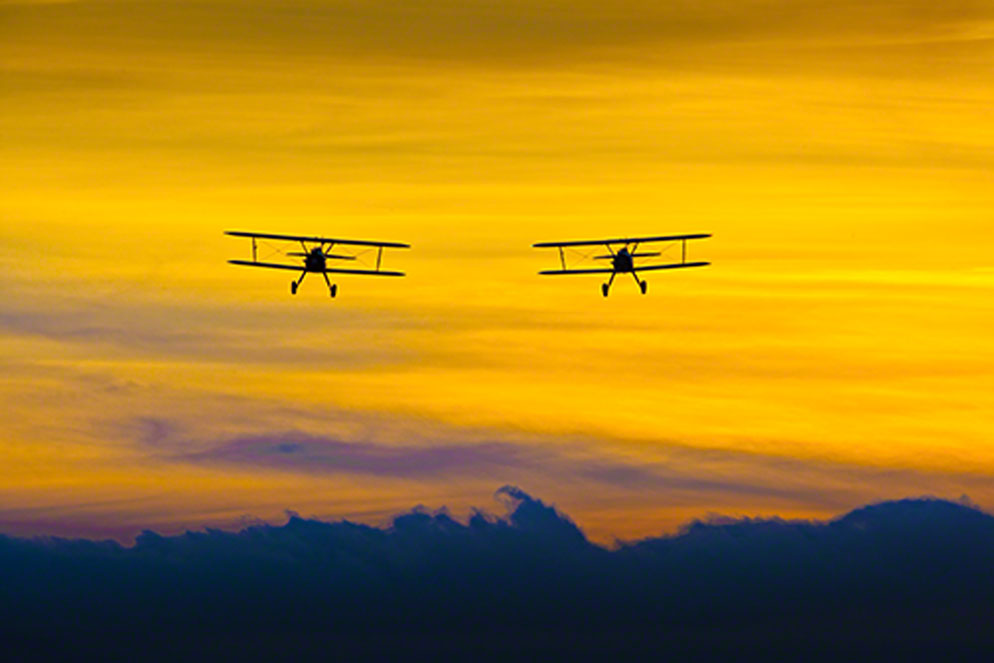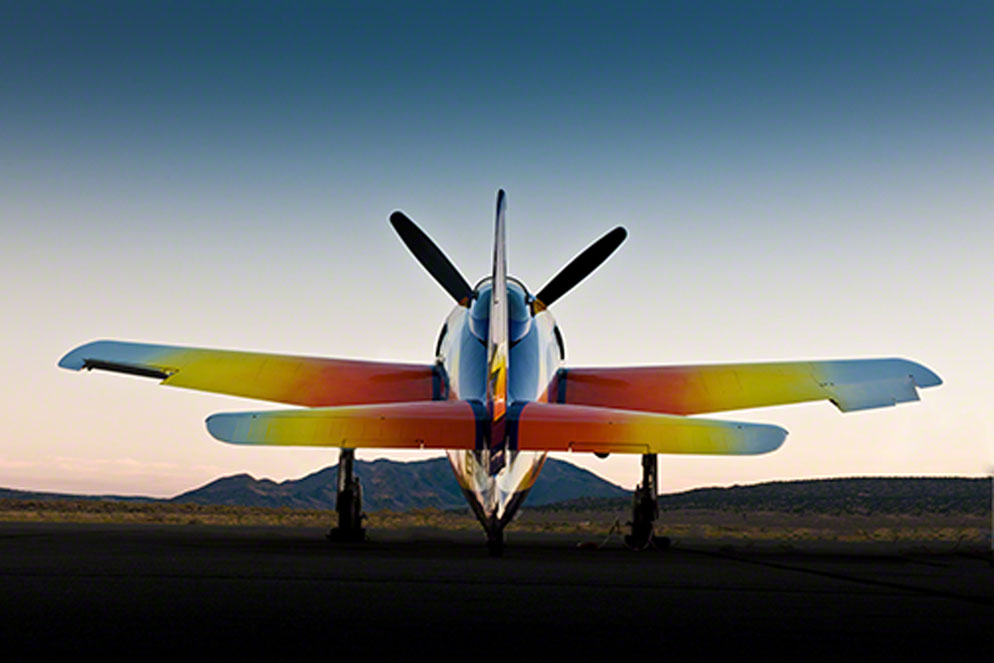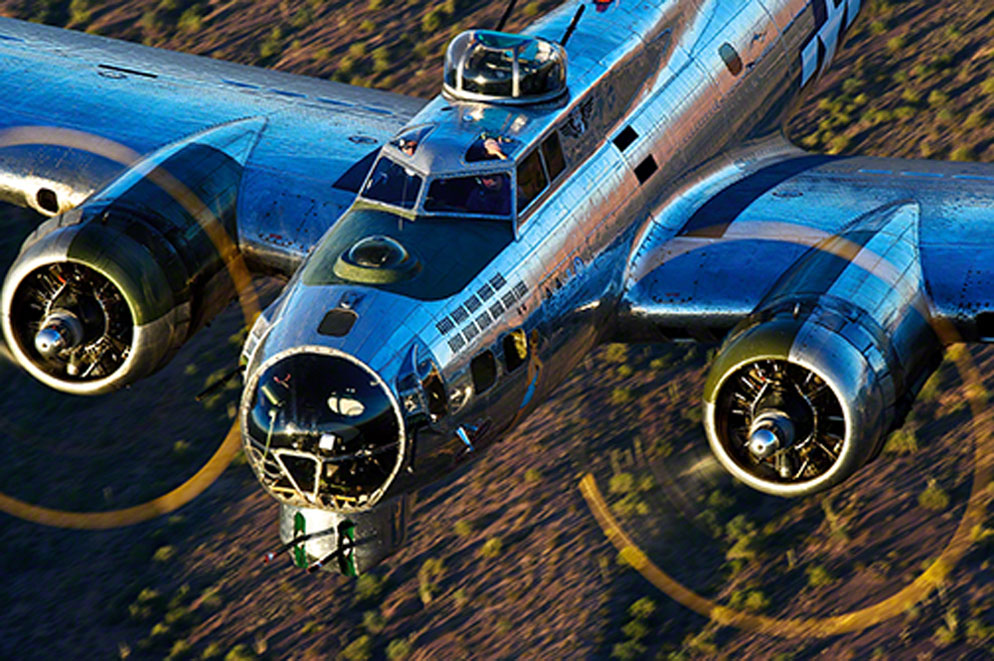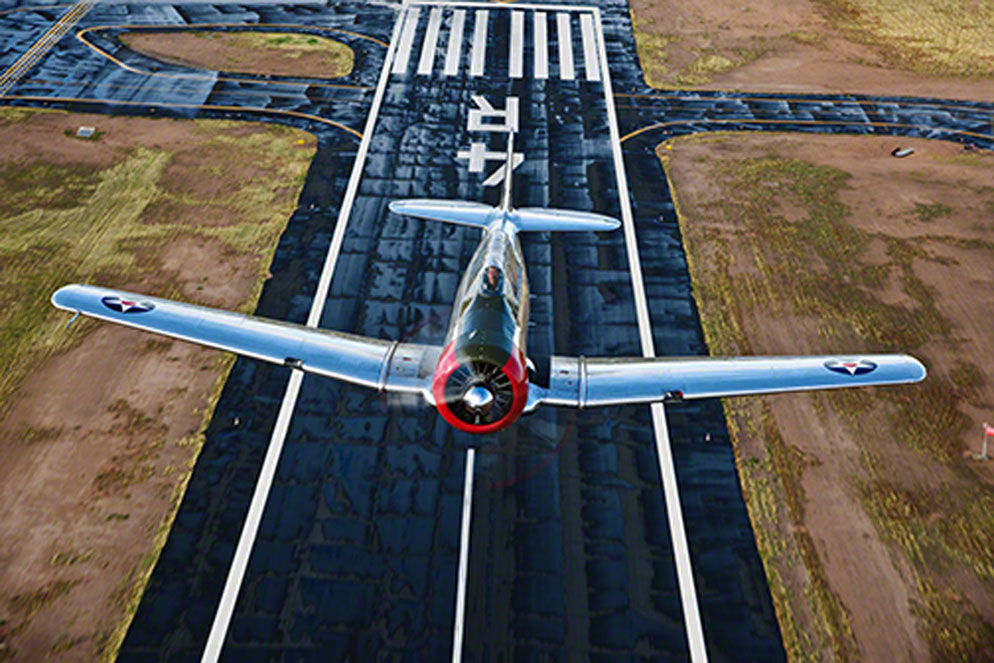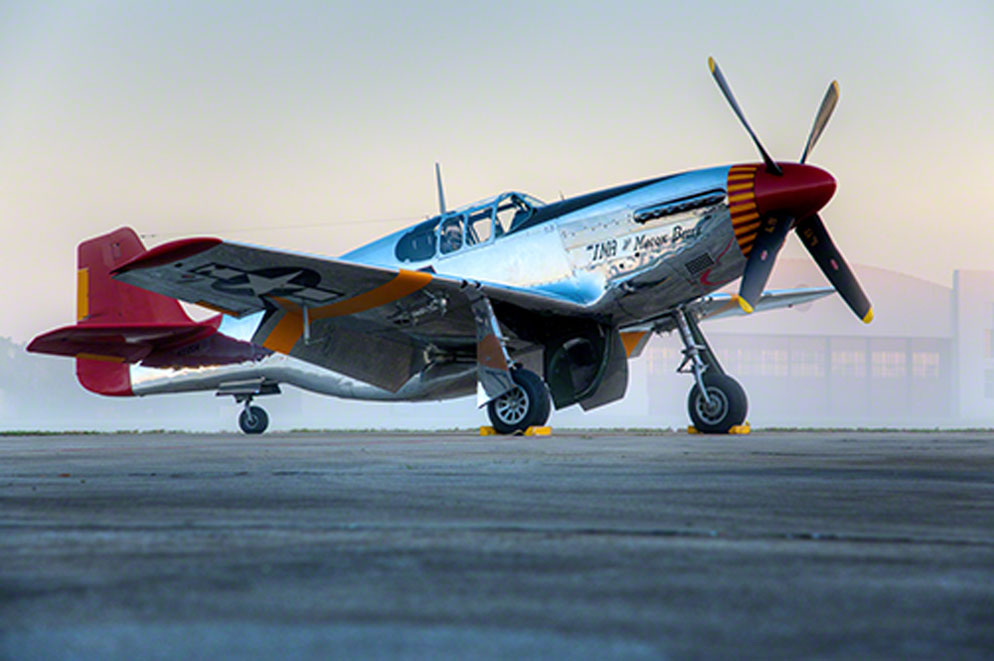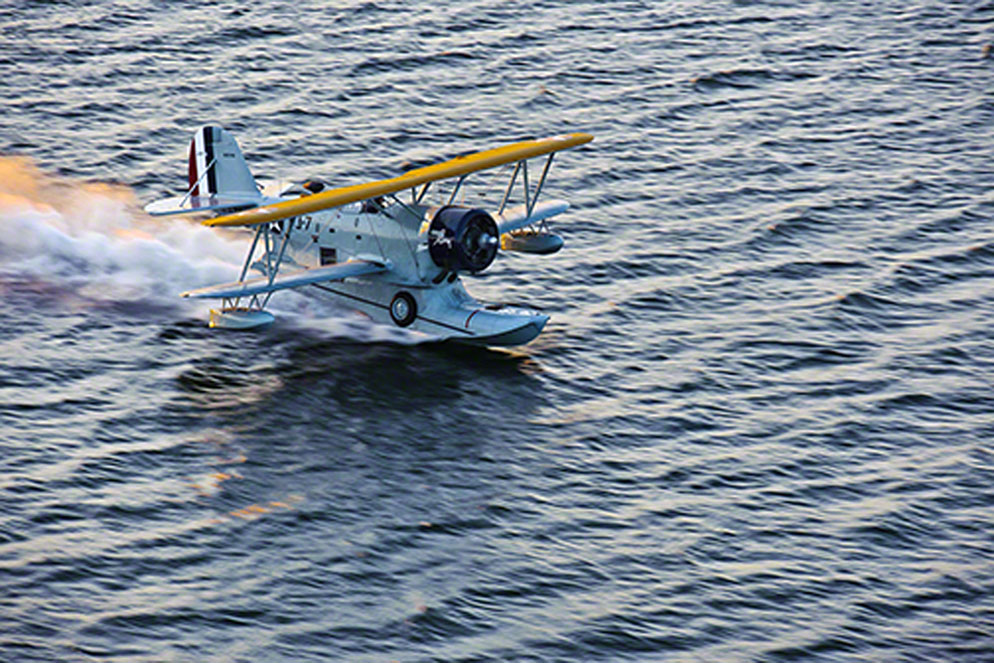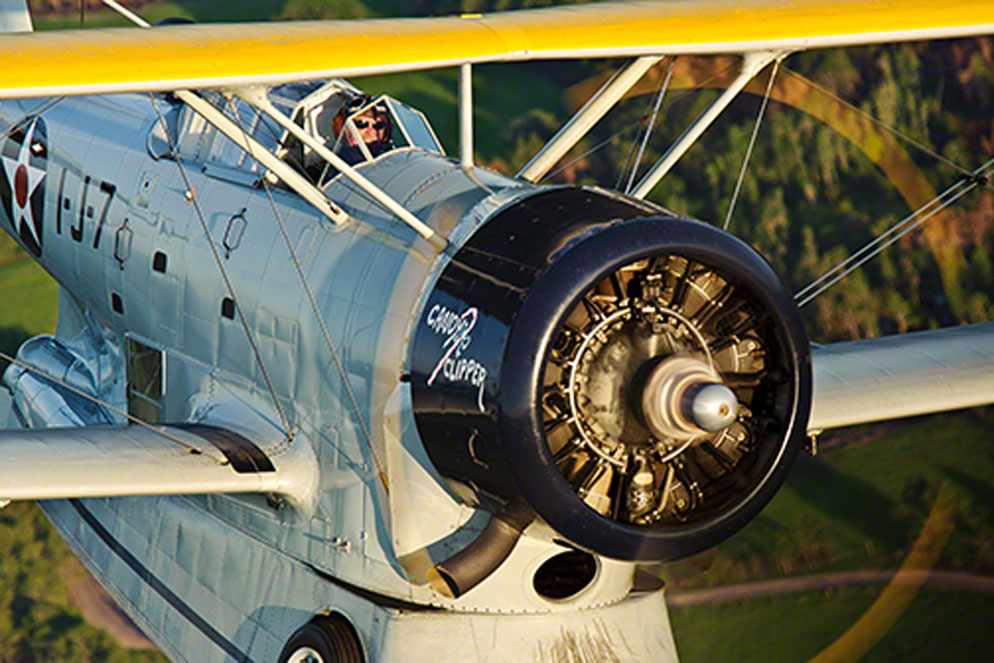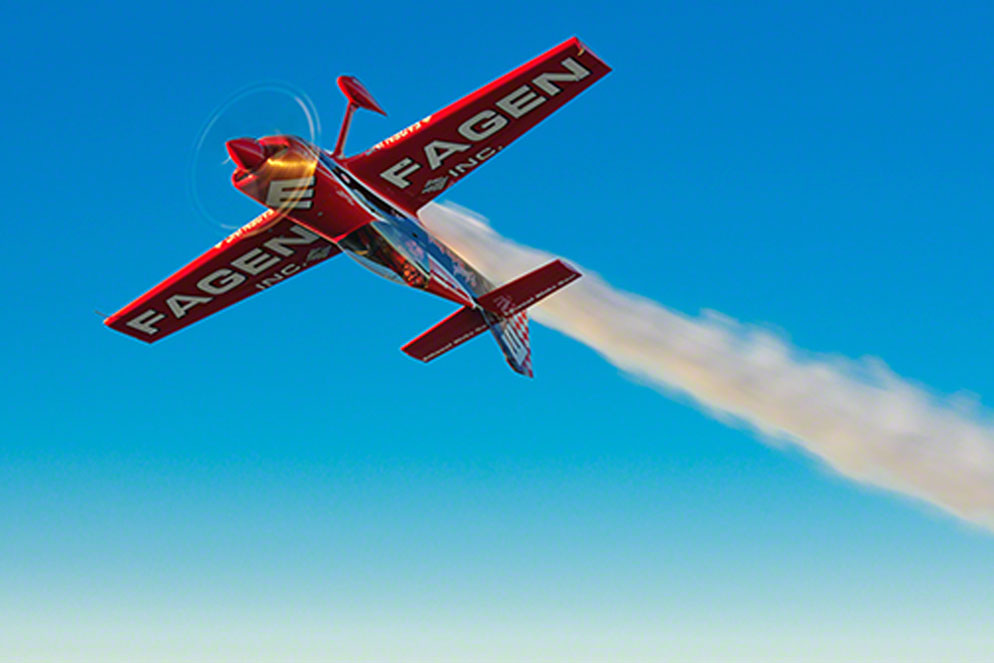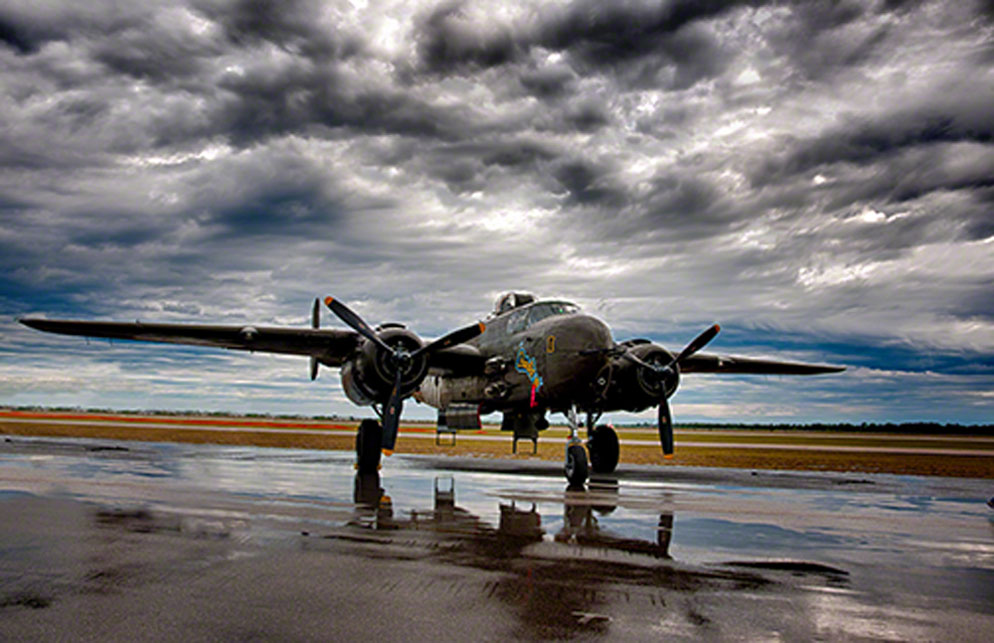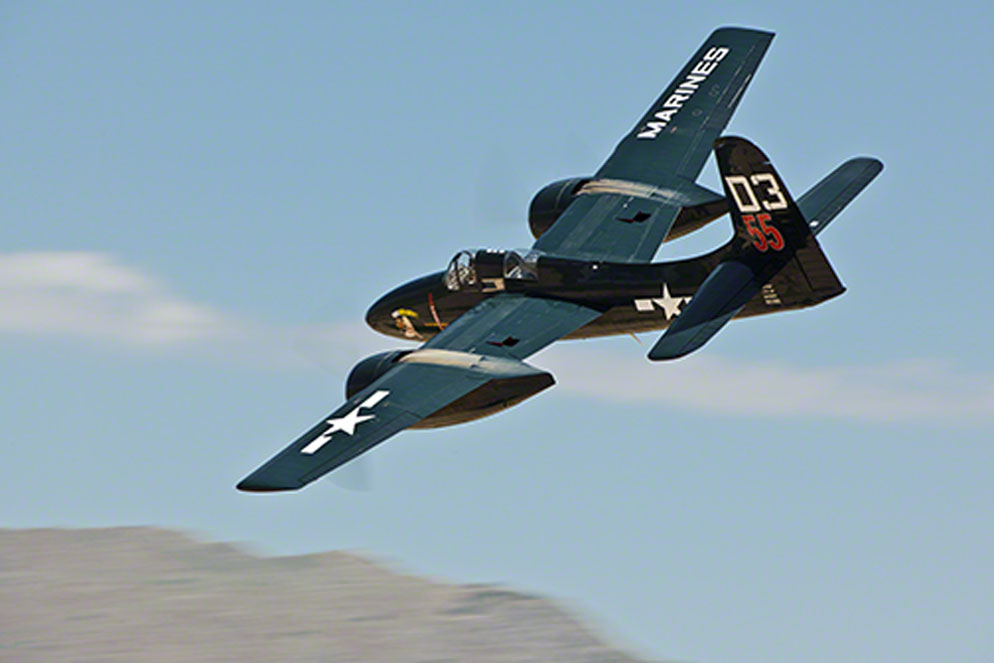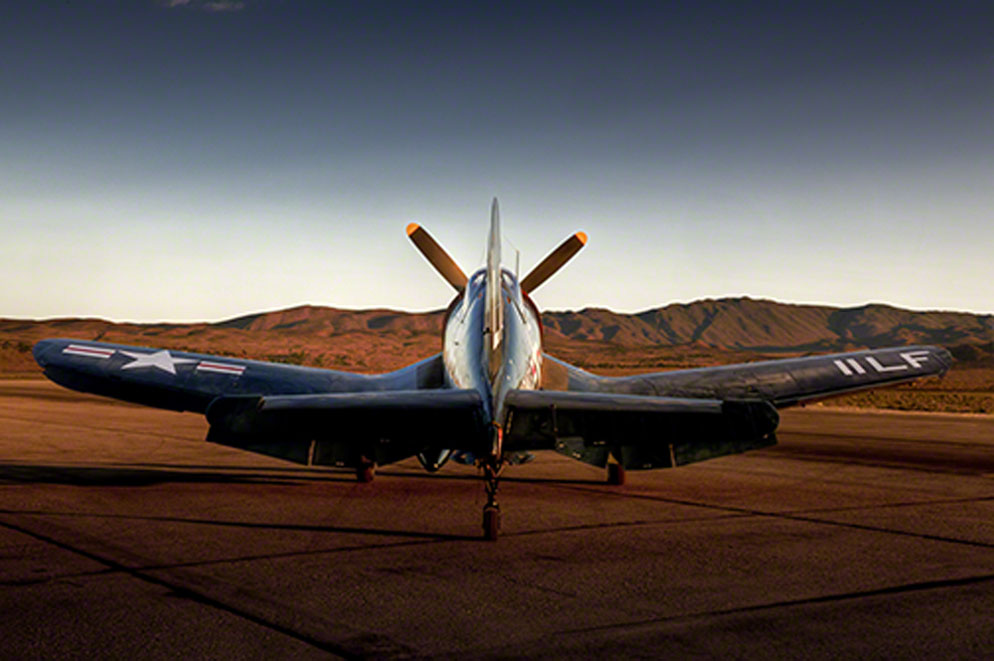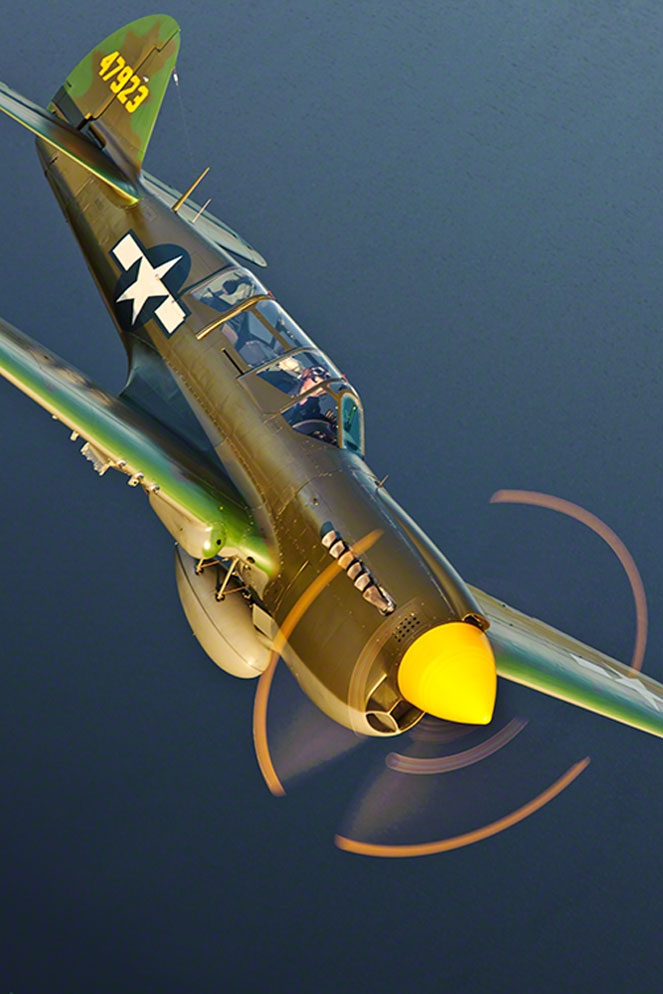Taking Great Photographs at Airshows
That's right—air shows. Popular, plentiful (a Google search quickly turned up a country-wide schedule) and decidedly photographer friendly, they're incredible photo opportunities.
We recently spoke with Moose Peterson, the legendary wildlife photographer, who four years ago added aerial imaging to his repertoire. His passion for the subject was immediately evident, and so was his willingness to share some photo tips.
Shooting from the Ground
"What’s so cool about aviation photography is that it's so accessible. There are air shows everywhere, and you really need only one camera and a few lenses to capture some stunning images.
"Aviation photography is a hand-held pursuit, and proper hand-holding technique is no more than your left hand cupped so the lens rests in your palm, elbows brought into your sides and the camera pressed against your head (a Nikon eyecup accessory is a huge help here).
"There are two exposure modes you want to use. For jets, aperture priority works best. I like to shoot at f/5.6 to f/8 and let the camera deal with shutter speed. For propeller planes, I like to use shutter priority with a speed of 1/25 second to 1/125 second so the props blur and the aircraft look like they're really flying, not hanging from a string.
"I set the camera for continuous high speed advance and closest-subject priority autofocus. Typically I'll underexpose using -1/3 to -1 exposure compensation to increase saturation of the image, and I've got my cameras set for vivid color mode.
"If this is your first time at an air show, think of your first day as practice. On the second and third day, you’ll likely see a huge increase in keepers as you get used to photographing the fast-moving planes. To have a great first day, practice before you head to the show by photographing your dog running in the yard or your kids riding their bikes. Just pan and shoot—it’s fun and it's productive.
"While there are all kinds of planes to shoot, there are three basic types of shots: ground-to-air, ground-to-ground and air-to-air.
"Some of my ground-to-air photos look like air-to-air images—the 10th photo above, for instance. Often the planes performing in air shows are about 90 feet above me, and because they're so low and they're banking and turning, it's all about my vantage point, which sometimes seems to put me in the air above the planes. When the pilot's turning his wing to make a steep bank turn, I can get a shot that looks like I'm shooting into the plane from above. To pan with the plane, simply twist your body at the trunk, smoothly follow the plane in the viewfinder and continue your motion until the shutter stops firing. It's all about fast autofocus and practice-makes-perfect panning skills."
"Ground-to-ground photos, which you might call portraits of the planes, are all about light and time. Everything you've learned about the great light of early morning and late afternoon applies to aircraft, so show up early and stay late. Take the initiative and find out about the air show before you go. Can you arrive early and take advantage of the light? Can you move around freely, perhaps meet the pilots and owners? Many air shows have early hours for photographers; take advantage of that. If there's a secret to aviation photography, this is it: it's all about the pilots who fly these aircraft and the people who restore and maintain the planes. Even if the people are not in the pictures, their handiwork, their passion and their sense of preserving history is. They'll love to talk to you if you're genuinely interested, and they're very helpful.
P-40 Warhawk - D3X, AF-S NIKKOR 70-200mm f/2.8G ED VR II, 1/80 sec., f/7.1, ISO 100, shutter priority, Matrix metering, -0.7 exposure compensation.
What’s so cool about aviation photography is that it's so accessible. There are air shows everywhere, and you really need only one camera and a few lenses to capture some stunning images.
Air-to-Air Photography
"Not everyone's going to be able to do air-to-air photography, though there are aircraft for hire and workshops for air-to-air shooting. I got to do it as a result of meeting and talking to the owner of a plane—it's the craft you see in the ninth photo above. It's a unique plane, and I asked him about it, and I took some pictures. I gave him my card and told him that if he'd send me an e-mail I'd send him some prints. Long story short, he invited me to come up with him and photograph air-to-air. This man's reaction to me was not untypical of aviation folks. They are great people, and if you're sincere, they'll know it. Just be prepared to deliver the prints if you promise them. I did, and pretty soon the word got around and I got other invitations.
"Most of the time air-to-air photography involves what's called a T6 plane—you can see one in the fourth photo above. It's a two-seater, one front, one back, and it's a common platform for photography.
"I shoot air-to-air hand-held with VR lenses—I like the 24-120mm and the 70-200mm—and I set my camera for Matrix metering because the light's almost always changing up there.
"So how do you get sharp images from a moving plane? Well, first of all you're in a plane going the same speed as the aircraft you're photographing, so as far as physics is concerned, think of it as not moving at all. You can have turbulence—the plane will go up and down—so, if your NIKKOR lens offers it, turn on not only VR but VR Active Mode; it's designed for more pronounced camera shake, the kind you can get in an airplane.
"Finally, when you're shooting from the back seat of a plane, the canopy will be open, so it's important to keep the camera out of the slipstream. Hold the camera in close to you, with your elbows in tight to your body for stability. I use continuous high auto advance and closest subject priority AF, the same as I do for ground-to-air shooting.
"Most air-to-air photography flights are 20 minutes or so, and it's an intense experience; there's nothing like it anywhere."
5 Tips to Getting Great Photos of Planes on the Ground & In the Air $
-
Practice, practice, practice. Practice shooting other fast moving subjects before you get to the air show. Expect to use the first day of an air show as your practice day, getting down the timing you will need to capture good photographs of planes in flight.
-
To make "pretty portraits” of the planes on the ground, photograph during early morning or late afternoon when the light is dramatic.
-
Panning with a moving plane shows motion. Twist your body at the trunk, while smoothly following the plane in the viewfinder, continuing this motion until the shutter stops firing.
-
When photographing air to air, and using a NIKKOR lens that offers Vibration Reduction, set the lens to VR Active Mode.
-
When photographing Prop Planes, you want to use a slow shutter speed to blur the propeller, showing motion. Moose’s starting off suggestion is to set the camera on Shutter Priority, using a shutter speed between 1/25 of a second and 1/125 of a second.

